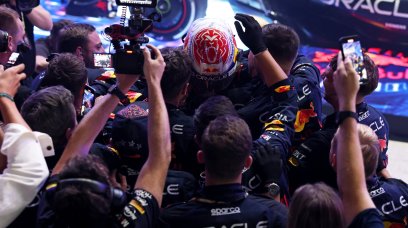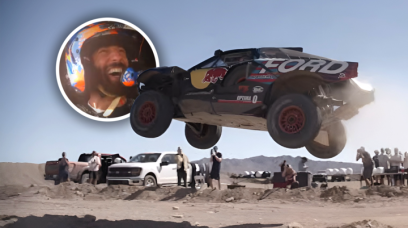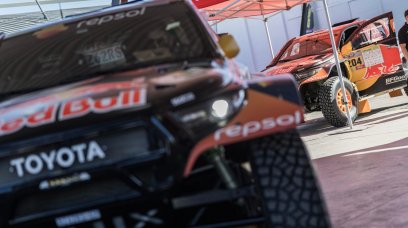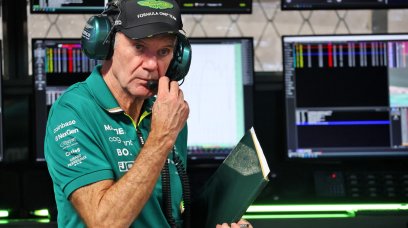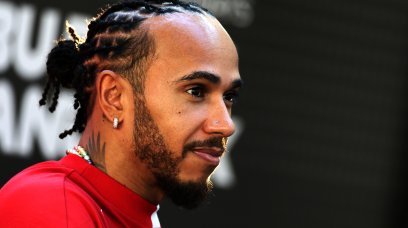When Mercedes revealed their W14 in February, it was an ultimatum: either we stick with this concept and see if it works, or we take inspiration from our rivals and restart. In a surprising vote of confidence they went with the former, despite the knowledge they had about the car concept from 2022's troubled W13. It was tricky to get into a set-up window, produced a lot of drag and suffered from poor tyre wear as a result. Two days into pre-season testing it quickly transpired that it was the wrong direction to take, and now the team were in a race against time to introduce a new concept that would enable them to close the gap to Red Bull. Even though it wasn't introduced until Monaco in May – owing to the cancellation of the Emilia Romagna Grand Prix – the seeds of their concept switch were planted much earlier when James Allison returned as Technical Director and swapped with Mike Elliott. Allison admitted that he was "up to his neck in it" when he returned , but knew that he needed to restore confidence in the Mercedes' technical team whose machines have dominated F1 in the last decade. Even though Monaco is an outlier of a circuit, Mercedes still gathered some vital data on how their car performs under slow-speed corners. The following race at the Circuit de Barcelona-Catalunya would become the real acid test for the team.
Updates work well on high-speed circuits
The Barcelona circuit is renowned for determining if a chassis is good given its mix of high-speed and corners that flow into each other. Mercedes was strong in 2022 when Lewis Hamilton came back from the rear of the field to fourth place, while George Russell briefly led the race after Charles Leclerc retired and could credibly fend off Max Verstappen and Sergio Perez in the strong RB18 for a few laps. This year Russell could work his way through the field after a scrappy qualifying session put him outside the top 10. The Briton had confidence early on in the race and believed a podium was possible due to the performance of the tyres during his opening stint. It is an encouraging sign at one of the toughest tracks on tyres due to the lateral loads they get subjected to, something which should benefit Mercedes at the upcoming races at Silverstone and Spa Francorchamps. Hamilton comfortably took the 'best of the rest' accolade with a relatively easy rise to second, although he probably should have been on the front row had it not been for the changeable conditions in qualifying. Trackside Engineering Director Andrew Shovlin explained that, while Mercedes expected the W14 to perform well at high-speed circuits, they learned a lot about the balance of their car. "The fact is that the update kit works very well around circuits like Barcelona with a lot of high-speed performance," said Shovlin in their Strategy Debrief video. "Although, the car itself would have still been okay there because we've been better at the fast circuits and the front-limited tracks. We ended up with a really good balance and really good race pace."
Did Mercedes catch Ferrari and Aston Martin on a bad day?
It's tough to digest a team's form based on one race alone, which is why the Canadian Grand Prix provided an important test to see how well they can compete with Aston Martin and Ferrari. Although Hamilton could not match Fernando Alonso during the critical tyre-saving phase of the race – the AMR23 is a lot kinder on its tyres – he could sustain the pressure on the Spaniard. Hamilton was perhaps helped by the fact that Alonso was nursing a critical problem with his fuel system, which prevented him from chasing Max Verstappen for the win. Mercedes also had the added luxury of Ferrari's qualifying strategy imploding on the Saturday, which put both their cars on a recovery mission to get back into the top five. Ferrari's pace was largely characterised by their ability to go longer on one set of tyres due to minimal degradation, which enabled them to pull off an aggressive one-stop strategy . Chief Technical Officer Mike Elliott admitted was not possible for Mercedes as they would have seen "far too much degradation" and left them vulnerable during the latter stages of the race. He explained: "For Ferrari that worked out because they were stuck in a DRS train with slower cars in front of them and they were able to jump them and then use their inherent pace in the race. "For us, if we had stayed out, I think we would have just been vulnerable to the cars around us and we wouldn’t have ended up in a better place overall."
Mercedes must maintain consistency
Mercedes has now leapfrogged Aston Martin in the Constructors' Championship after their double podium in Barcelona, which is surprising when you consider the AMR23 is the superior car out of the pair. An unbalanced driver line-up coupled with some unreliability problems for Lance Stroll has led to a lot of points being haemorrhaged on their side, although Aston Martin are likely going to be happy with a third in the points table at the summer break considering where they were last year. The real threat to Mercedes should be from Ferrari as they have started to unlock the potential of the SF-23, after addressing some of the fundamental issues that plagued their drivers in races. Red Bull clearly has more pace in reserve which rivals expect will be shown at the upcoming races , so fighting for a win on merit will be tough for Mercedes. But should any issues arise for Max Verstappen, both Hamilton and Russell should be there to capitalise.
Most read


